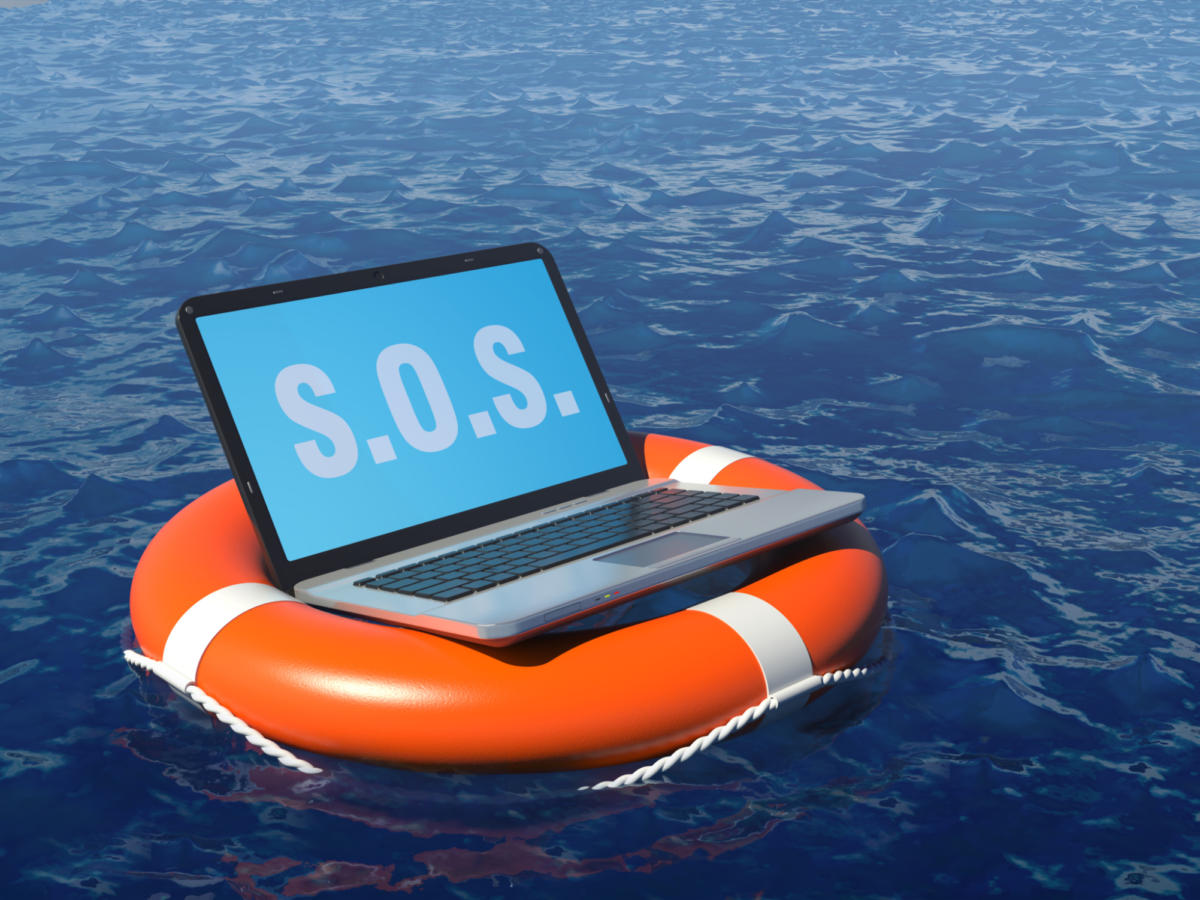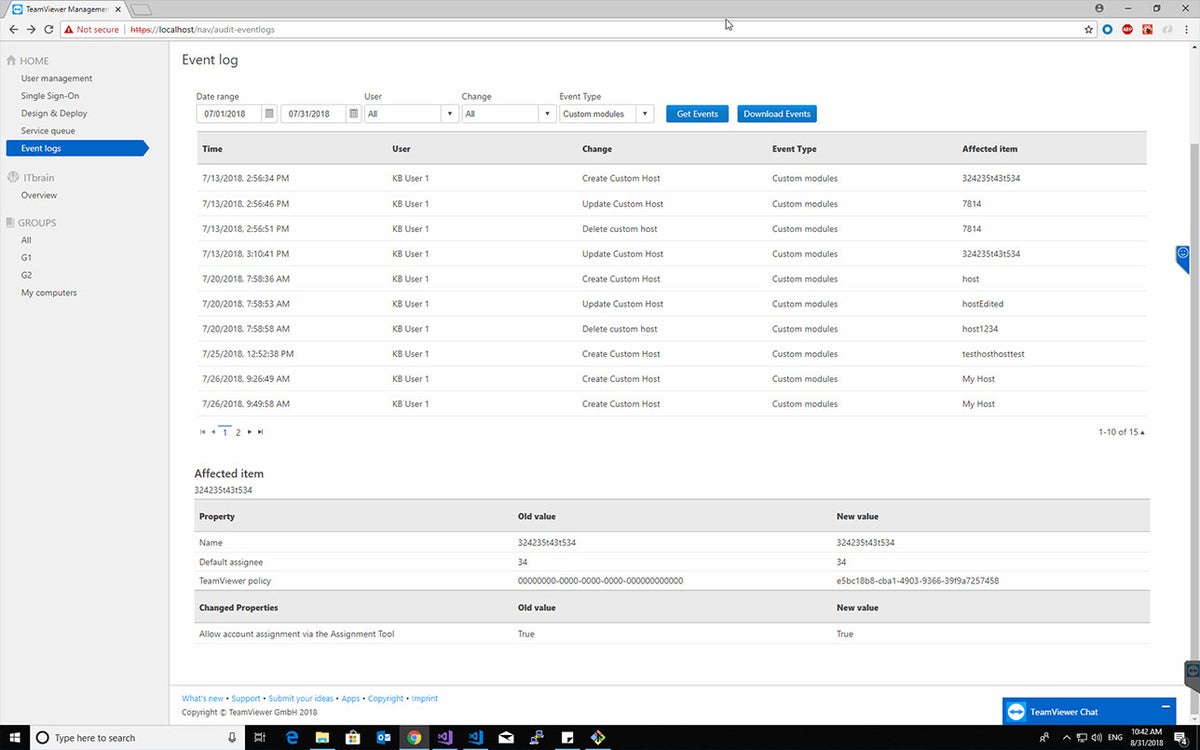The explosion of work-at-home employees and customers has spurred the need for more robust remote assistance software in many organizations. Here’s help.
For many companies, IT support has typically meant a member of the help desk walking over to an employee’s desk and looking over their shoulder to fix any problems, or a quick one-to-one connection between an IT staffer and a remote office employee. With a majority of employees and IT staffers now working at home due to Covid-19, the need for enterprise-level software that can support these larger numbers has also grown.
Remote access tools have been around for years, with a range of features and benefits for companies and individuals looking to help less tech-savvy users with computer issues and maintenance. At its base level, the software creates a secure connection between one person’s computer and a remote connection, allowing the first user to operate the second computer as if they were in the same room. Once the connection is made, several other features such as screen sharing, program installation, file transfer, text chat, and audio and video communications are supported.
Many of these features are also seen in other categories of software, such as web conferencing or videoconferencing apps, which can confuse buyers looking at options for their IT remote assistance needs. In addition, many companies that offer remote support software also offer remote monitoring and management tools, which can actively or passively monitor equipment and devices beyond an employee’s desktop.
There is good news, however: Many of the remote assistance software companies offer tiered levels, allowing for a free download, trial or entry-level version for users to try out, with professional and/or enterprise versions that expand the number of licenses or concurrent sessions allowed. So this category lends itself very well to the idea of “try before you buy.”
Presented below are quick descriptions and links to some of the more popular options for enterprise remote assistance tools, based on our research of the market and the features that most companies would likely need. Your individual feature needs may vary, so head to the company’s website to learn more details about each tool.
AnyDesk
Pricing: Lite plan, $11 per month, one session at a time; Professional plan, $21 per month, one or more concurrent sessions; Power plan, $52.50 per month, unlimited concurrent sessions (all billed annually). The company’s Enterprise version offers an on-premises solution with a network appliance. (See plans and pricing.)
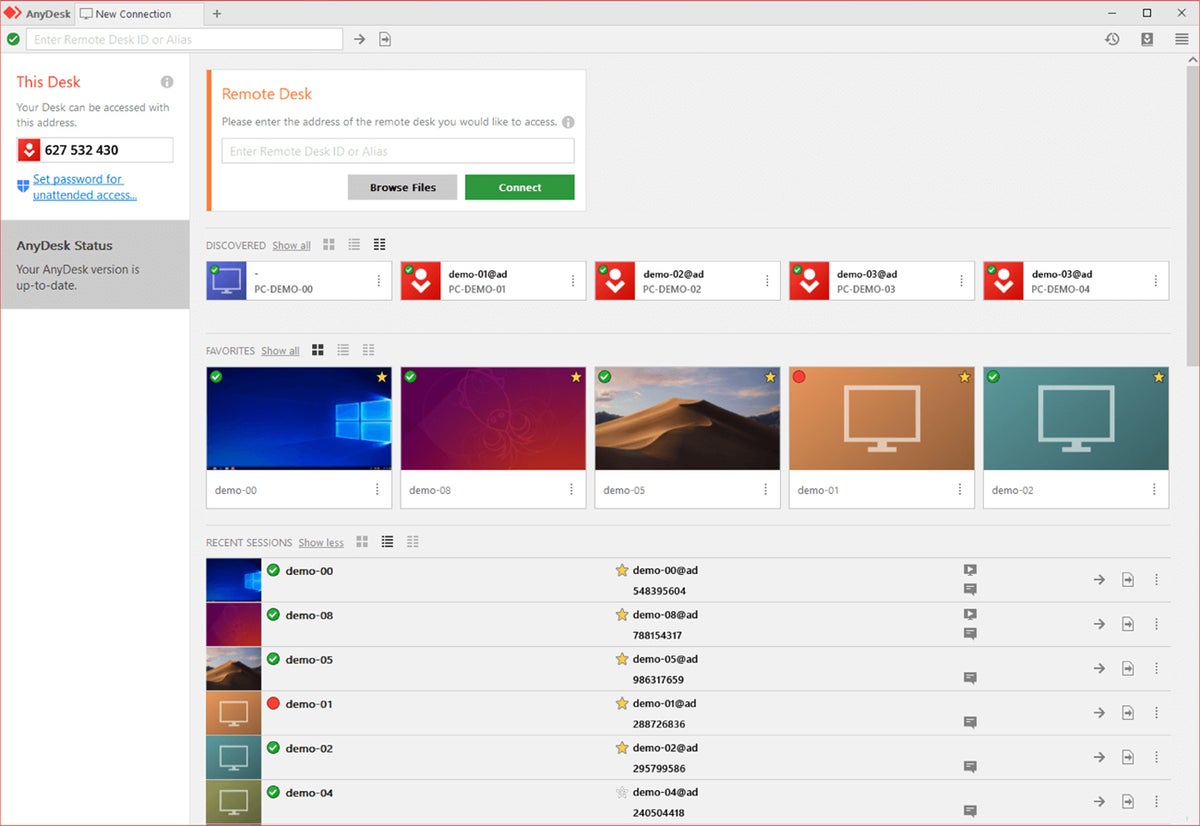 AnyDesk Software
AnyDesk SoftwareWith more than 100 million downloads total and 130 million sessions per month, Germany-based AnyDesk Software provides secure remote desktop connections aimed at IT professionals and individuals. The software provides cross-compatibility between machines on several operating systems, including Windows, macOS, Android, iOS, Linux, FreeBSD, Raspberry Pi, and Chrome OS. The company touts its fast and lag-free connections through its DeskRT codec, which offers 60 frames per second on local networks and most internet connections, latency below 16ms on local networks, and efficient use of bandwidth for sessions as low as 100 KB/sec.
Remote access features include remote printing, remote reboot, session recording, and file transfer, as well as compatibility with older operating systems (such as Windows 7). The software utilizes TLS 1.2 transport security, and an RSA 2048 asymmetric key exchange to verify every connection. Administration features include a built-in address book, access to session logs, the ability to create a personalized username and logo for branding, an MSI package that can roll out AnyDesk to multiple computers, and integration with IT service management systems such as Remote Desktop Manager or TANSS. The company provides a free trial of the software, and it’s free for personal use.
BeyondTrust Remote Support
Pricing: Cloud plan, $1,995 per concurrent license, billed annually; Owned Appliance plan, on-site or in your data center, one-time purchase (contact sales for price). (See plans and pricing.)
 BeyondTrust
BeyondTrustFormerly known as Bomgar, BeyondTrust provides secure tools for enterprises around password management, endpoint management, and secure remote access to corporate equipment. Remote Support’s features include remote control and screen sharing, unattended access, annotation, file sharing, and remote mobile device camera sharing. Support can be provided through the Bomgar client, a browser-based console, or a mobile app.
Additional features include integration with external directories, such as LDAP, service management systems, third-party authentication tools, and password managers. Customization and branding options include a portal, support invitations, custom watermarks and end-of-session surveys. Support representative photos can be included via Active Directory to help personalize support scenarios. Roles, permissions, and audit and compliance features are supported, including session logs and the ability to enable video session recordings.
Security features include native two-factor authentication (one-time passcode), with support for existing 2FA systems. Data is encrypted via TLS 1.2, and encryption for data at rest can be enabled through your company’s key management system.
Goverlan Reach
Pricing: Standard plan, $29 per month per concurrent technician; Professional plan, $69 per month per concurrent technician; Enterprise plan, $129 per month per concurrent technician (all billed annually). An incident management add-on module ($55 per month per concurrent technician) provides integration with service management systems. (See plans and pricing.)
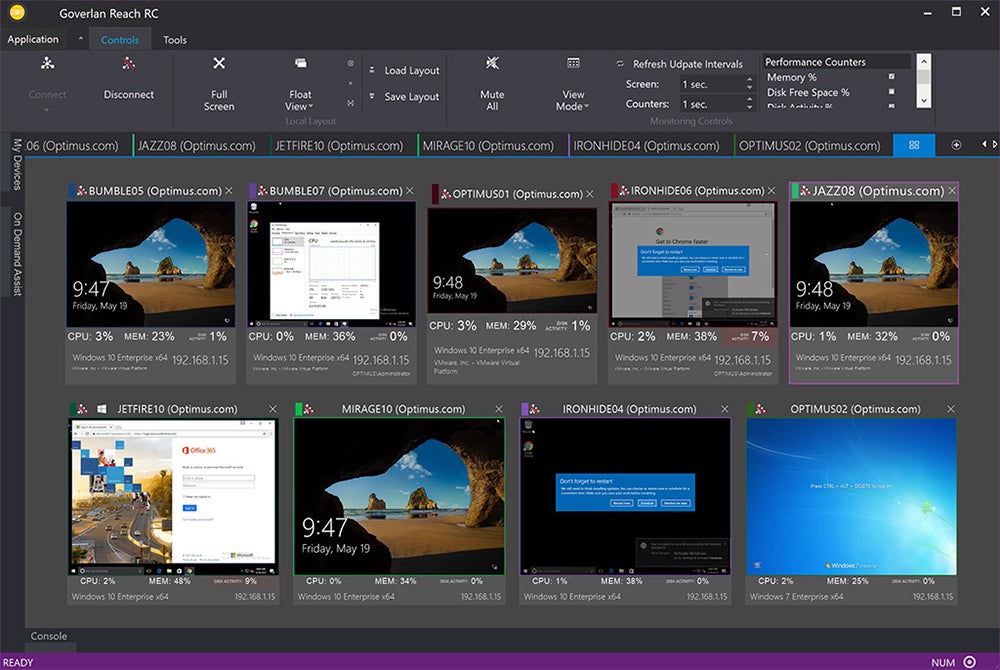 Goverlan
GoverlanGoverlan provides remote control and access services that cover incident management automation, background systems management, software deployment, IT process automation and IT compliance. Features of its remote control and access include the ability to connect to any machine within seconds, on-demand and unattended access, audio and text chat, and video capture of desktop access sessions. The service also supports many-to-one support sessions in addition to one-to-one sessions.
The Professional and Enterprise versions include Active Directory integration and management, while the enterprise version includes global systems management via IT process automation and support for IT compliance assessment and remediation — for example, to let an IT staffer scan users and machines to detect and report noncompliant configurations or states. Goverlan Reach supports two-factor authentication, its connections are protected by TLS 1.2 and AES 256-bit encryption, and the software is HIPAA-compliant.
iDrive RemotePC
Pricing: Consumer plan for two computers, $29.50 for one year, $59 for two; SOHO plan for up to 10 computers, $69.50 for one year, $139 for two; Team plan for up to 50 computers, $249.50 for one year, $499 for two; Enterprise plan for up to 100 computers, $499.50 for one year, $999 for two. Custom Team and Enterprise plans that allow more computers to be connected are also available through sales contact. (See plans and pricing.)
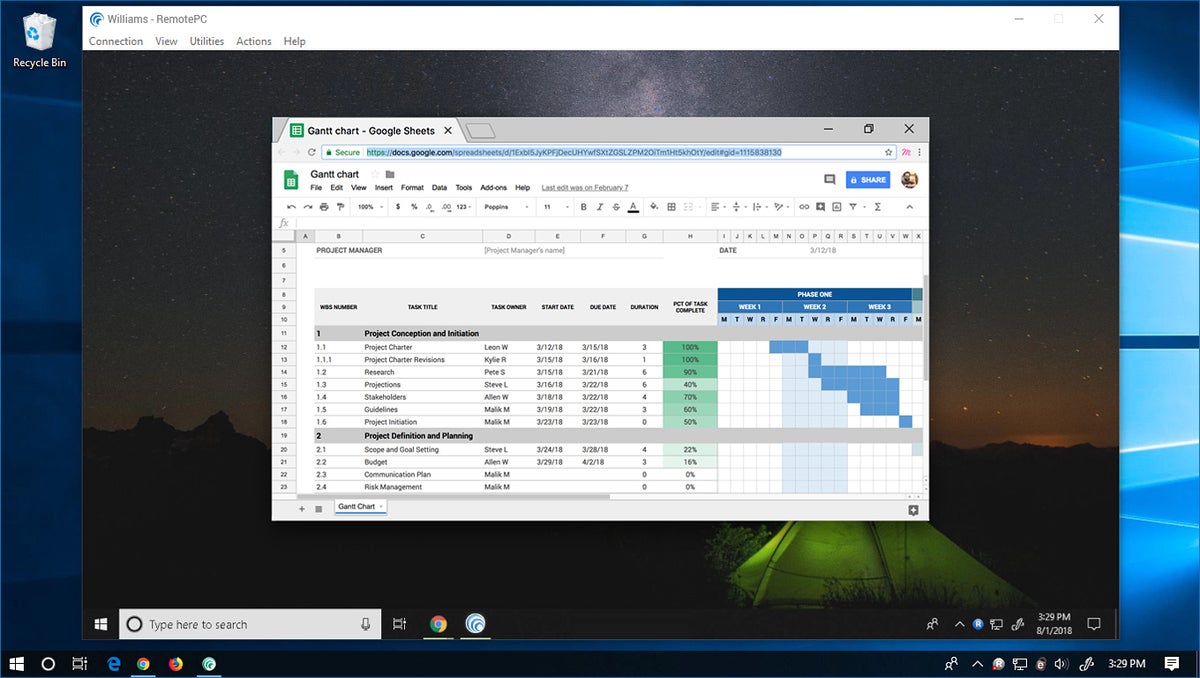 iDrive
iDriveiDrive provides its RemotePC software across a spectrum of business types, from individual consumers looking to access one other remote computer, through small businesses and teams looking to connect more systems, up to enterprises that need remote access to 100 or more computers.
Remote access features include remote printing, a collaborative whiteboard, web access that does not require remote software installation, mobile access from iOS and Android devices, and the ability to listen to audio and watch videos from a remote computer on a local one.
Enterprise features include user management, remote reboot, file transfer, compliance support, computer grouping, and remote deployment (which allows you to grant users permissions to install RemotePC on other computers so they can access them remotely).
Security features include TLS 1.2 with AES 256-bit encryption for remote access, including the option to set a unique personal key for computers that acts as a secondary password. The personal key is stored locally, not on RemotePC servers. Two-factor authentication is also supported.
LogMeIn Rescue or RescueAssist
Pricing: Rescue: $108.25 per month, billed annually; mobile support add-on $37.50 per month; team pricing requests available via quote. RescueAssist: $55 per agent per month, billed annually; mobile support add-on $20 per agent per month. (See pricing details for Rescue and RescueAssist.)
 LogMeIn
LogMeInLogMeIn, through its several acquisitions of other remote desktop and access companies over the years, has several options available for remote access. Not only can companies use Rescue and RescueAssist (formerly known as GoToAssist), but features within the remote access and control category can be handled through the company’s LogMeIn Pro and RemotelyAnywhere offerings. Even GoToMyPC can offer some support in this area. For enterprises, as best as we can tell, Rescue and RescueAssist offer a range of options that would suit larger companies.
Rescue offers multiplatform support, including Windows, macOS, Android and iOS devices, and multiple browser support. In addition to remote control, Rescue provides remote diagnostic capabilities, as well as unattended access support.
The company’s partner network includes out-of-the-box integrations and open APIs, including support for ServiceNow, Salesforce + Lightning, Microsoft Dynamics, Zendesk, and others. Administration features include session history and recording, a command center that provides live reports of technician statistics and activity, and synchronization with Active Directory.
Security is handled through TLS 1.2 in transit, and includes AES 256-bit encryption, along with two-step verification. IP restriction features allow users to control who can access Rescue based on their IP address.
RescueAssist allows for support sessions right from a web console, and includes file transfer, remote diagnostics, multi-monitor navigation, and support for up to 15 sessions simultaneously per technician. Session recording and reporting is also available, as well as centralized administration, two-factor authentication, and an Active Directory connection.
Remote Utilities
Pricing: Unlike many of these tools, Remote Utilities is a one-time purchase, not a subscription. License types include Endpoint, $29 per endpoint (minimum 10 endpoints); Starter, $99 per technician (up to 20 endpoints); Mini, $249 per technician (up to 50 endpoints); Pro, $499 per technician (unlimited endpoints); and Site, $12,000 for unlimited technicians and endpoints. (See licenses and pricing.) Licenses are purchased for the major version current at the time of purchase; updates and upgrades are then handled through the company’s upgrade policy.
Remote Utilities
The software includes an admin module, called Viewer, which acts as a control center to manage remote connections. Remote modules, called Host, are installed on each remote workstation, giving you unattended access to computers and servers in any location. Instead of Host, users can install an Agent module that provides spontaneous access and doesn’t require installation or administrative privileges; self-hosted Server software that can be installed on-premises to provide relay, sync and authorization for remote connections; and Portable Viewer, which lets you access remote machines from any computer away from the Viewer system.
All data traffic is encrypted via TLS 1.2, and optional two-factor authentication is supported for remote hosts, through Google Authenticator or similar smartphone apps. Remote customers can also connect through an Internet-ID connection to bypass firewall settings. The system also supports Active Directory integration and includes MSI Configurator to create custom Host installers for unattended access, as well as customization branding options.
TeamViewer
Pricing: Business license (one seat, one session at a time), $49 per month; Premium license (multiple seats, one session at a time); $99 per month; Corporate license (multiple seats, three concurrent sessions), $199 per month (all billed annually). For customers looking for more than 10 concurrent sessions, the company offers enterprise licensing via a sales channel. (See plans and pricing.)
TeamViewer
TeamViewer says its software has connected more than 2 billion devices, with up to 45 million connections at the same time. The software supports remote access, remote control, and remote support processes on multiple systems, including Windows, macOS, Android and iOS. Beyond client systems, the software can remotely connect to servers, commercial-grade machines, and IoT devices through a secure global remote access network.
Once authenticated, a support person can control the system or Android device as if they were the primary user, along with the ability to transfer files from the host system to a remote device. Policies and roles can be assigned to ensure that only the right employees can access specific computers or devices. In addition, every remote-control session can be recorded, without the possibility of users pausing or stopping the recording. Communication is secured by end-to-end 256-bit AES encryption, with two-factor authentication. TeamViewer says it is certified according to SOC2, HIPAA/HITECH, ISO/IEC 27001, and ISO 9001:2015, and also complies with GDPR.
TeamViewer provides a free version for personal use, as well as TeamViewer Tensor, an enterprise-level remote support, access and device control system deployed as a software-as-a-service offering. The Tensor version includes integration with major business applications, comprehensive audit logging, IoT-device access and augmented reality remote features to let employees or clients share their smartphone’s camera view for support assistance.
Zoho Assist
Pricing: Standard plan, $8 per technician per month; Professional plan, $13 per technician per month; Enterprise plan: $21 per technician per month (all billed annually). There’s also a free plan with limited features. (See plans and pricing.)
Zoho
Part of Zoho’s vast catalog of business tools, Zoho Assist connects IT staff to users through web-based, on-demand remote support sessions. Support workers can access and manage remote Windows, macOS, Chrome OS, and Linux PCs and servers; the Professional and Enterprise plans also support iOS, Android, and IoT devices.
All paid plans include file transfer, instant chat, clipboard sharing, multiple-monitor navigation, and the ability to remotely reboot and reconnect automatically without needing to terminate an active session. Higher-level plans add features such as two-way screen sharing, voice and video chat, session scheduling, session notes, and session recording. (Unattended remote access, which provides remote access features without a person needing to be at the other end, is offered as a separate service.)
Because Zoho Assist is web-based, there is no requirement for installing any software on either the host or client systems. Zoho requires that all connections to servers use TLS 1.2/1.3, including web access, API access, mobile apps and email client access (IMAP/POP/SMTP). Customers can also add multi-factor authentication for verification, including SMS or a time-based one-time password (OTP) option. Idle sessions are automatically ended if they are left idle beyond a predetermined time period.
Administration features include user management, the ability to assign roles and privileges, auditing tools for exporting and saving logs, and analysis views with support session details. The Enterprise version also includes customized widget, branding and email templates to maintain brand identity for companies. The service also integrates with help desk software, including Zoho Desk, ServiceNow, Zendesk, and Google’s G Suite.
Additional options
Because remote access and remote desktop features can be seen in multiple categories of software, it can be difficult to determine exact features and options that might be right for your company. In addition, remote management and monitoring tools, which can be aimed at managed service providers, also offer remote access as part of their features.
The chart below outlines additional companies we came across during our research, offering everything from free remote access products for individuals to enterprise-level support, monitoring, and administration tools.
More remote desktop software tools
This article originally appeared on ComputerWorld.

